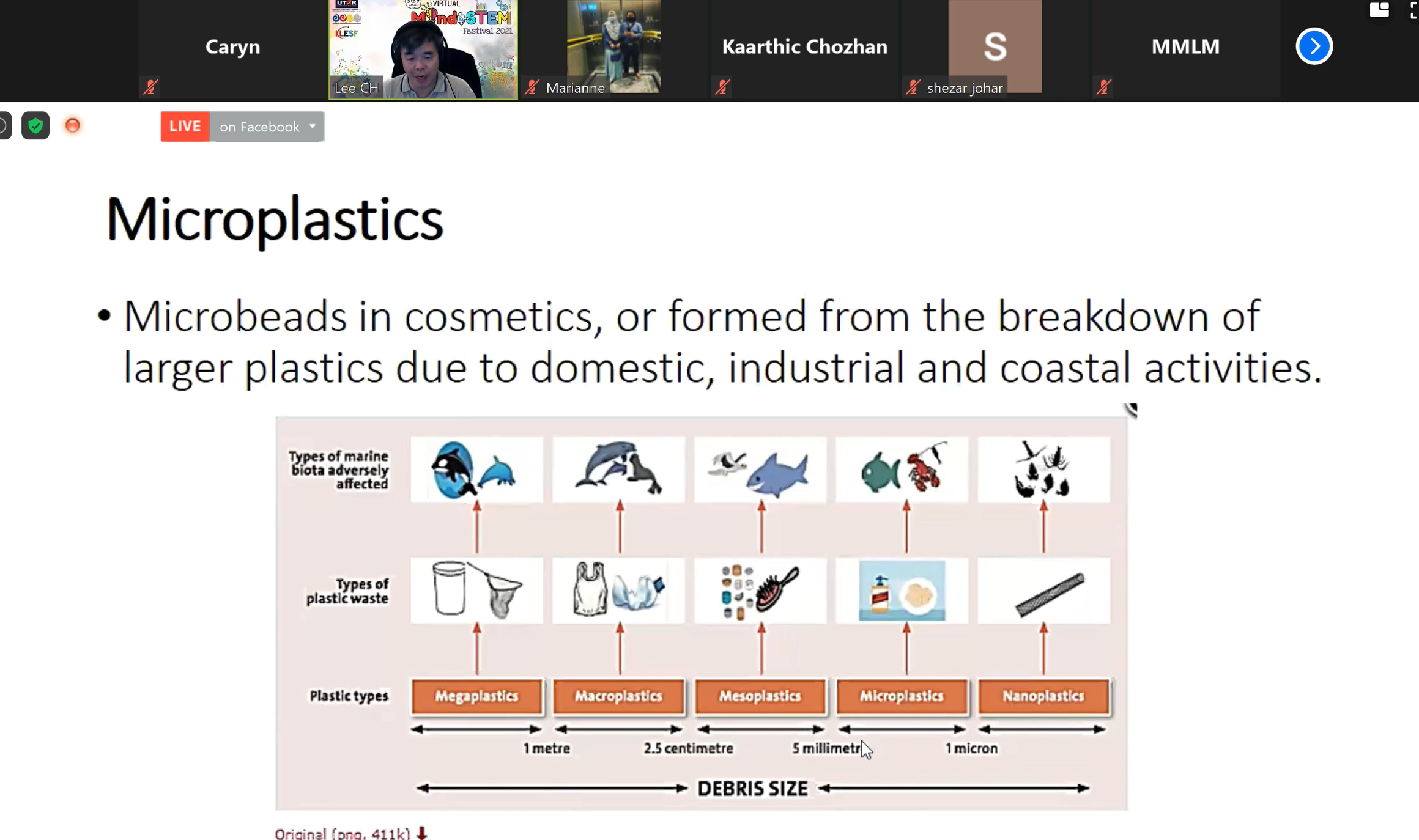
Raising awareness on the downside of plastics
As part of the Virtual Mind and STEM Festival 2021 programme, a webinar titled “Do you mind eating plastics? I mind!” by Centre for Foundation Studies of Kampar Campus academic, Lee Chee Heong was held on 7 July 2021 via Zoom and Facebook Live.
“Plastic was first invented in 1907. It has populated our lives for about 70 years now and it has made the modern world possible. The common types of plastics are PETE, HDPE, LDPE, PVC, PP, PS, nylon and many more,” Lee introduced.

Lee explaining the sources of plastic waste
Lee explained how life will be in the absence of plastics. He said, “Plastics are everywhere and it is part of human life that is hard to live without. It has great properties as it is versatile, lightweight, tough, transparent, waterproof and has a great lifespan. It also brings convenience to lives and businesses as it prolongs the lifespan of goods and food which reduces wastage and at the same time being hygienic. The production of plastic is huge as the worldwide demand for plastic has risen from 1.7 million tonnes in 1950 to 280 million tonnes in 2011.”
However, there is a cost to using plastic as not all plastics can be recycled. Also, not many plastics are being reused, thus causing plastic pollution on air, land, rivers and oceans. It is also one of the reasons for animal deaths and it poses health threats. Little focus has been given to plastic pollution at the worldwide level.

Lee sharing his knowledge on microplastics
In the webinar, Lee also spoke about the sources of plastic waste, plastic infestation in the world’s oceans, exporters of plastic waste, importers of plastic waste, microplastics and their impact on humans and other related topics.
“Eighty per cent of plastic litter in oceans comes from land-based sources. One and fifteen million tonnes of plastics enter the ocean every year through rivers globally and 94 per cent of these plastics end up on the seafloor. Deep-sea organisms are eating those plastics. There was an increase in plastic waste during the Covid-19 pandemic due to panic buying; more take-away food packages, single-use plastic bags as well as high disposal of PPE such as face masks and medical kits. The earth was overburdened by these plastics during the pandemic,” added Lee.
Lee explained, “Microplastics are found on land, rivers, animals, food, drinking water and inside our body. A study found that plastic fibres were present in 87 per cent of the human lungs due to microplastics in the air. Meanwhile, WWF conducted a study in 2019 and on average, people could actually be ingesting approximately five grams of microplastics every week, which is equivalent to a credit card. Some industrial and consumer products made of plastic contain endocrine-disrupting chemicals which can negatively impact human health.”
“The discovery of plastic-eaters will not solve the plastic problem. The 3R is not effective and reusing or reprocessing the plastic waste into other things is not productive as they are still plastics. However, we can increase the funding and effort to clean up plastic wastes, reduce plastic dependency although it is not easy, avoid or reduce single-use plastics, and come up with inventions to substitute plastics. Consumers need to voice out to increase producer’s responsibility and we also need support from international governmental alliance bodies and have proper government policies and incentives,” said Lee.
![]()
![]()
© 2021 UNIVERSITI TUNKU ABDUL RAHMAN DU012(A).
Wholly owned by UTAR Education Foundation (200201010564(578227-M)) LEGAL STATEMENT TERM OF USAGE PRIVACY NOTICE